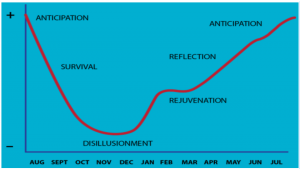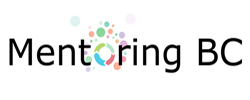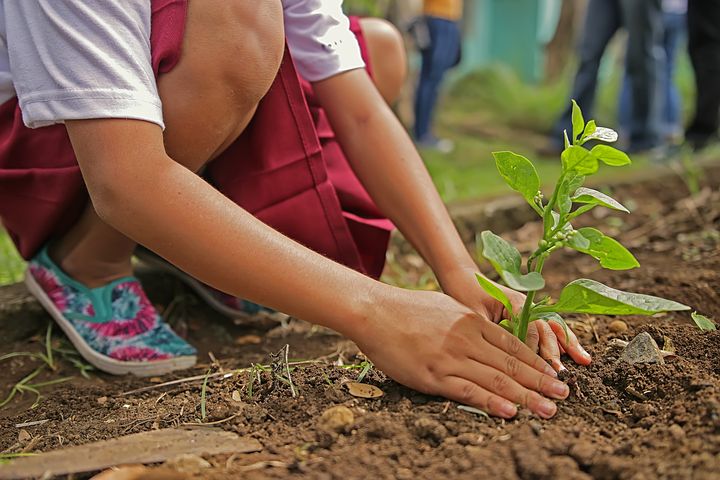(Originally posted on 180 Days of Learning)
Welcome to 2017! We are almost halfway through the school year and there is still so much to learn and right now is a great time to get started.
The New Teacher Center has noted that early career teachers go through a yearly cycle of phases. (Check out this article to learn more.) Although it seems to be more deeply felt by those in the first years of teaching, in my experience, teachers move through this cycle every year. These phases have a deep impact on our learning and growth as professionals. This post will focus on how we can make the most of the phase of rejuvenation: the phase that many teachers find themselves in during the month of January.

*adapted from http://weac.org/articles/new-teacher-handbook/phases/
September starts with anticipation and excitement but as the teacher becomes engrossed in the day to day tasks of teaching they fall into survival mode. Often this is characterized by a lack of parity in a teacher’s work-life balance.
Next, in the weeks leading up to the winter break, teachers fall into the dark doldrums of disillusionment. Teachers may feel like they are not effective. Many get sick. In addition to feeling overwhelmed, they may even questions their commitment to the teaching profession.
January, however, brings rejuvenation. It feels like a second beginning for many teachers as they are ready to (re)embrace challenges and learning. It can be a rich time of risk-taking and growth in a teacher’s practice.
So how can we make the most of rejuvenation? What can we do to leverage this renewal of energy into professional learning and growth? Here are some suggestions for teachers at any stage of their career to embrace this January:
- Plan, teach and reflect with a colleague:
Plan your lessons together, teach them separately and come together to reflect on what worked, what didn’t and what you would do differently. Plan and co-teach a mini-unit with a colleague by bringing your classes together. Engage in a lesson study process. Choose a collaboration method that works for you and your colleagues and get to work learning and teaching TOGETHER!
- Try something totally new:
Have you always wanted to try a “no hand up policy”? Go for it! Curious about genius hour? Set aside an hour a week for four weeks to try it out and see how it works. There are so many possibilities; just remember what you try should be grounded student learning. Don’t just try something for the sake of trying it. Pick something that will enrich the learning experiences of your students.
- Seek out feedback:
Opportunities to receive feedback about your practice are scarce. Think about your strengths and stretches. Is there something in your teaching practice you would like to examine? Invite a colleague or an administrator into your classroom to observe you. Be sure to set up a pre-meeting to discuss the observation focus and a post-meeting to hear the feedback and debrief. If you are not comfortable making your teaching practice public, consider setting up a device to record yourself teaching and review the recording to see what you do well and what changes you would like to make.
The school year is rounded out with a reflection phase that typically begins in May. It is a time when teachers look back on the year and acknowledge their successes and set goals for the following year.
Take a risk this January, try something new, open up your teaching practice. When May comes around and you are reflecting on your year, thinking about what you learned and the impact you had, you will be glad you did.
(Tashi Kirincic)

